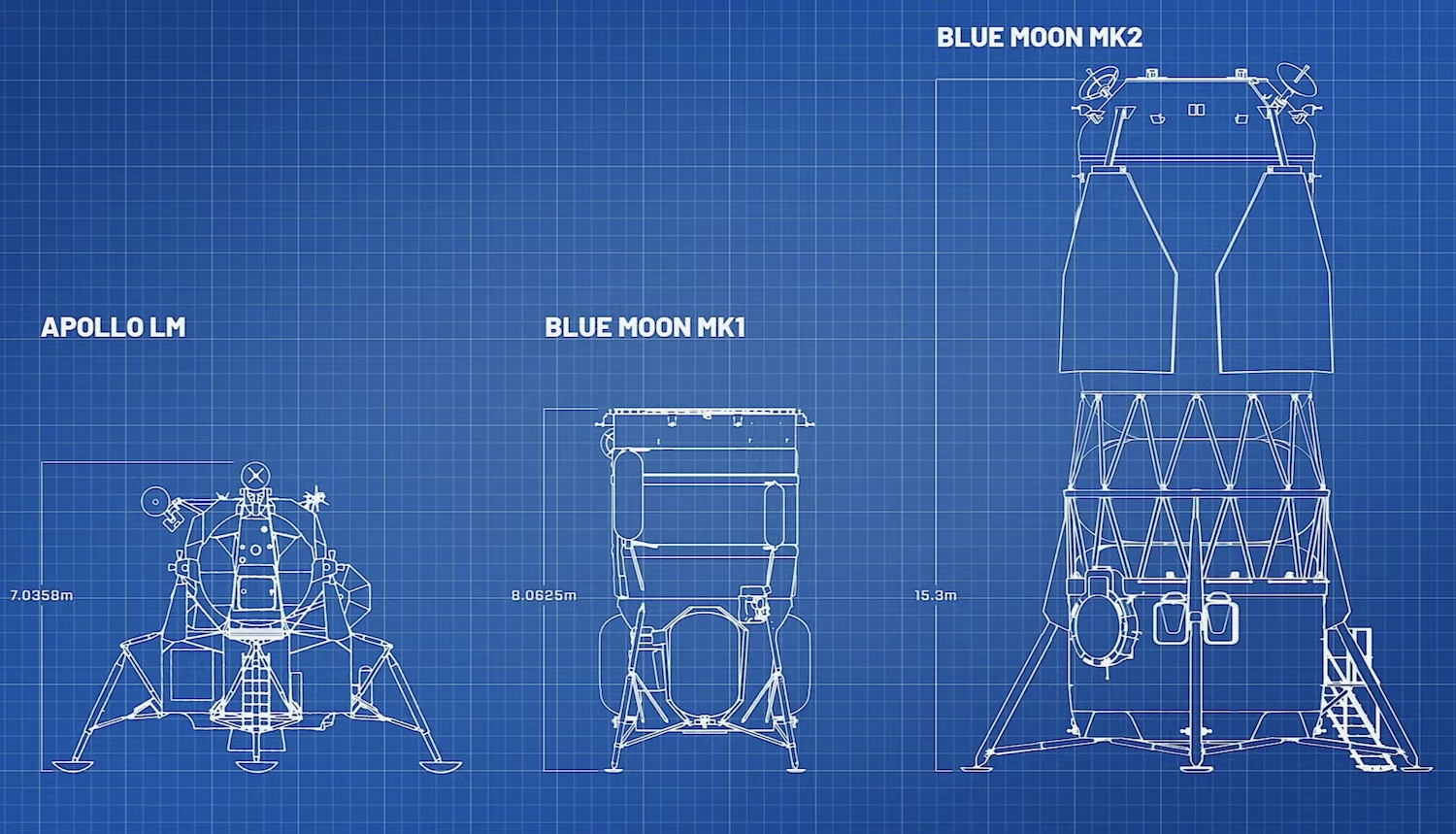Blue Origin aims to land next New Glenn booster, then reuse it for Moon mission
The first Blue Moon Mark 1 is funded from Blue Origin’s coffers. It is now fully assembled and will soon ship to NASA’s Johnson Space Center in Houston for vacuum chamber testing. Then, it will travel to Florida’s Space Coast for final launch preparations. “We are building a series, not a singular lander, but multiple…
The first Blue Moon Mark 1 is funded from Blue Origin’s coffers. It is now fully assembled and will soon ship to NASA’s Johnson Space Center in Houston for vacuum chamber testing. Then, it will travel to Florida’s Space Coast for final launch preparations.
“We are building a series, not a singular lander, but multiple types and sizes and scales of landers to go to the Moon,” Remias said.
The second Mark 1 lander will carry NASA’s VIPER rover to prospect for water ice at the Moon’s south pole in late 2027. Around the same time, Blue will use a Mark 1 lander to deploy two small satellites to orbit the Moon, flying as low as a few miles above the surface to scout for resources like water, precious metals, rare Earth elements, and helium-3 that could be extracted and exploited by future explorers.
A larger lander, Blue Moon Mark 2, is in an earlier stage of development. It will be human-rated to land astronauts on the Moon for NASA’s Artemis program.

Blue Origin’s Blue Moon MK1 lander, seen in the center, is taller than NASA’s Apollo lunar lander, currently the largest spacecraft to have landed on the Moon. Blue Moon MK2 is even larger, but all three landers are dwarfed in size by SpaceX’s Starship.
Credit:
Blue Origin
NASA’s other crew-rated lander will be derived from SpaceX’s Starship rocket. But Starship and Blue Moon Mark 2 are years away from being ready to accommodate a human crew, and both require orbital cryogenic refueling—something never before attempted in space—to transit out to the Moon.
This has led to a bit of a dilemma at NASA. China is also working on a lunar program, eyeing a crew landing on the Moon by 2030. Many experts say that, as of today, China is on pace to land astronauts on the Moon before the United States.
Of course, 12 US astronauts walked on the Moon in the Apollo program. But no one has gone back since 1972, and NASA and China are each planning to return to the Moon to stay.
One way of speeding up a US landing on the Moon might be to use a modified version of Blue Origin’s Mark 1 lander, Ars reported Thursday.
If this is the path NASA takes, the stakes for the next New Glenn launch and landing will soar even higher.

